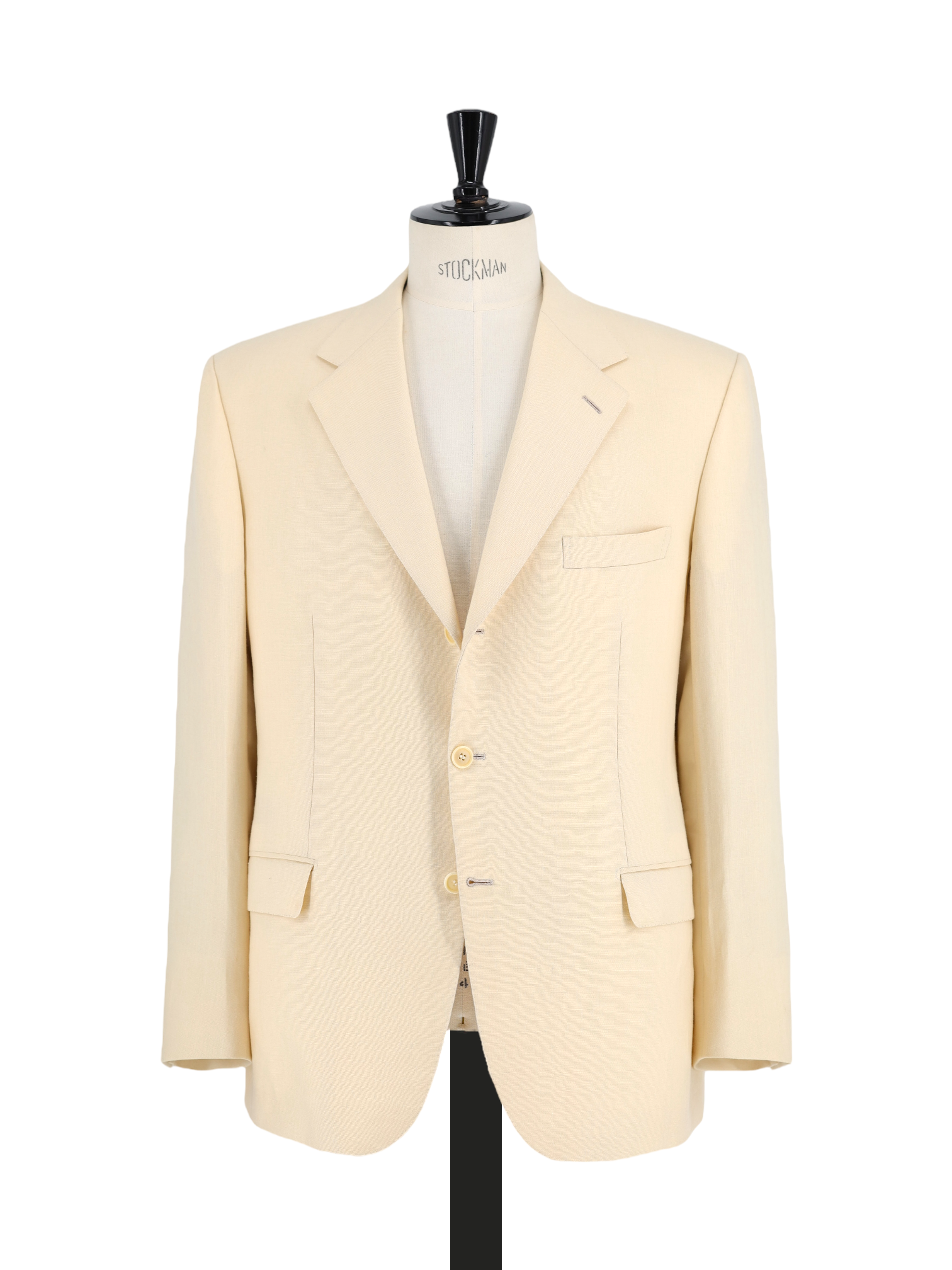
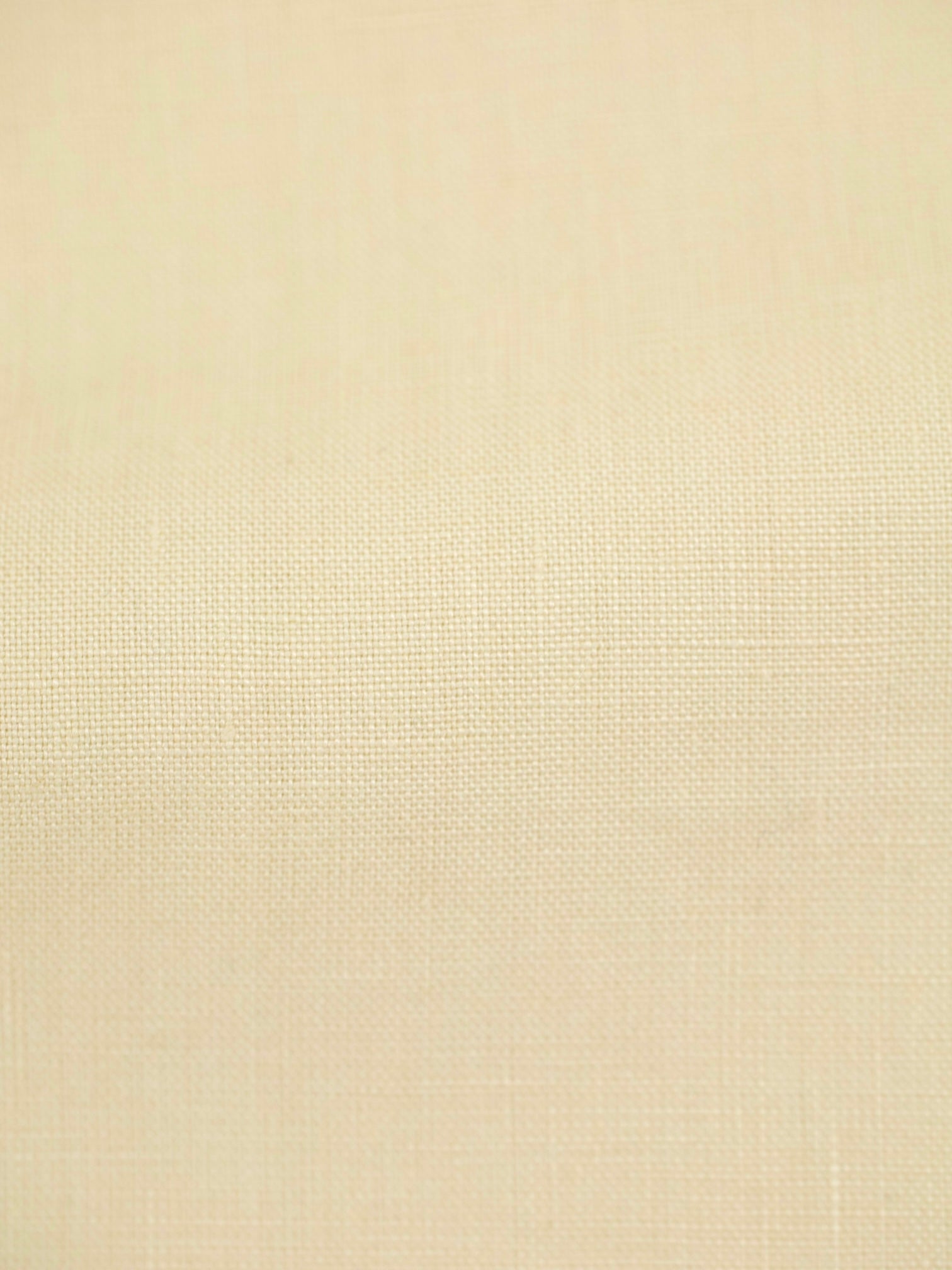

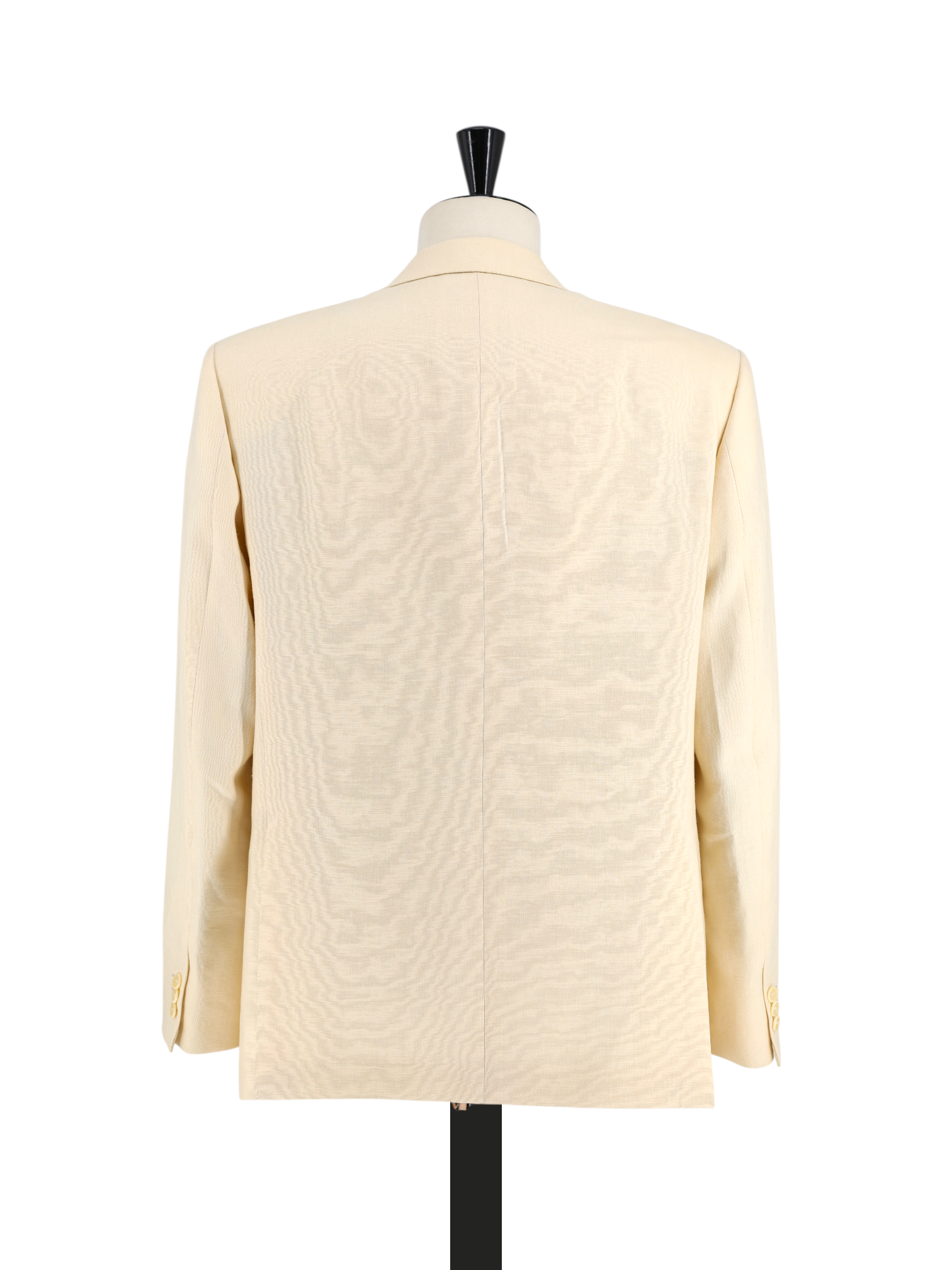
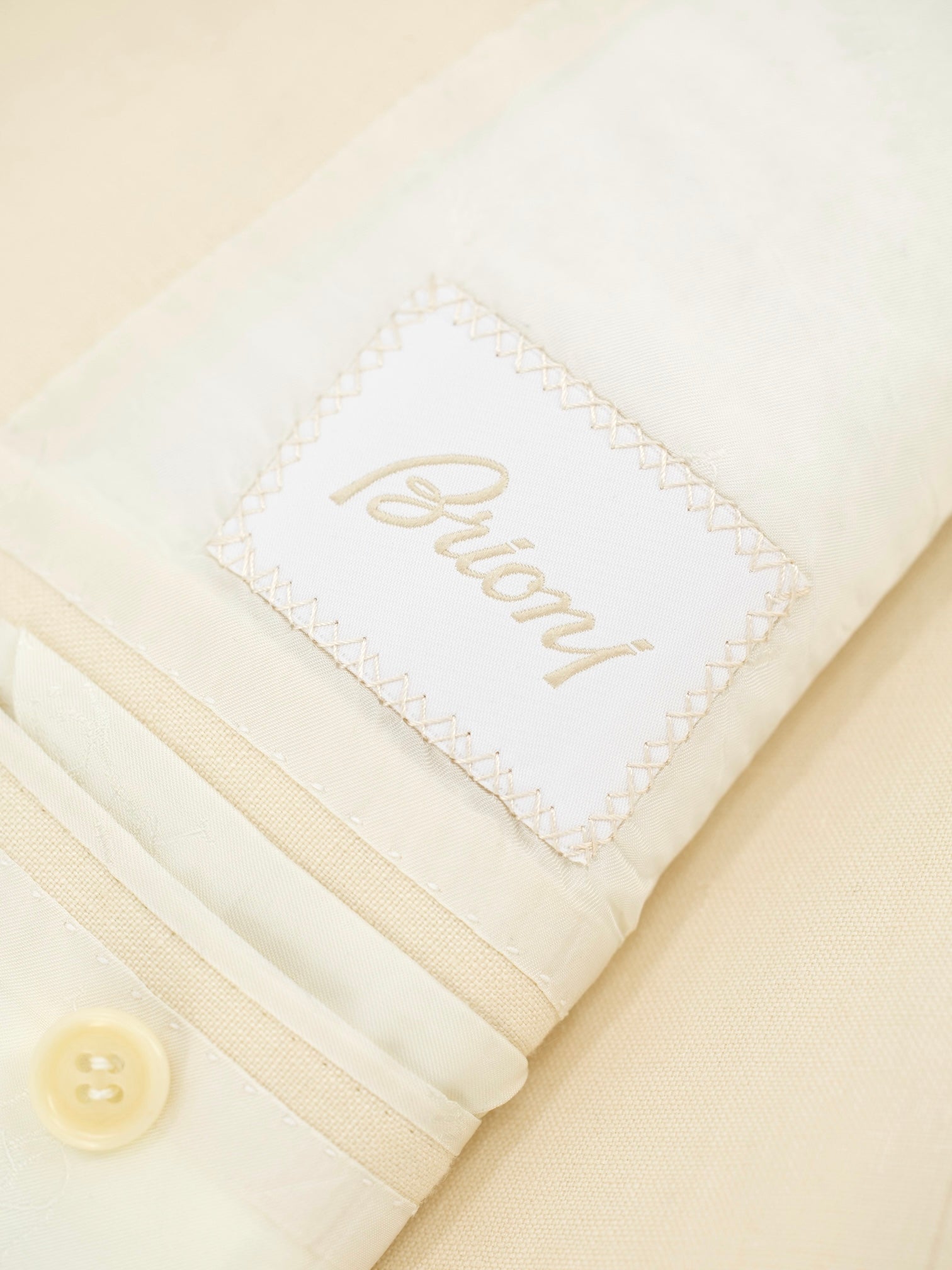
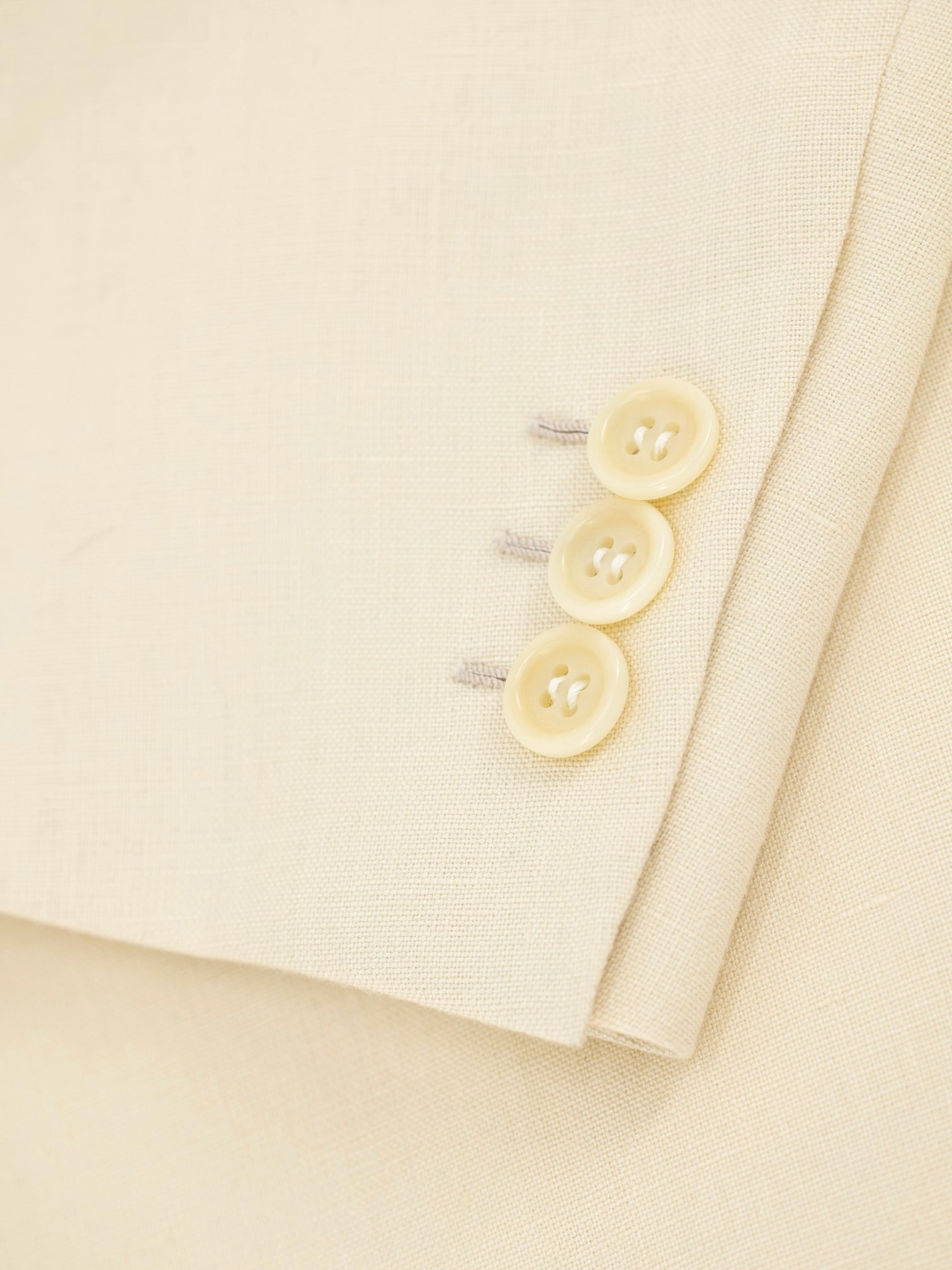
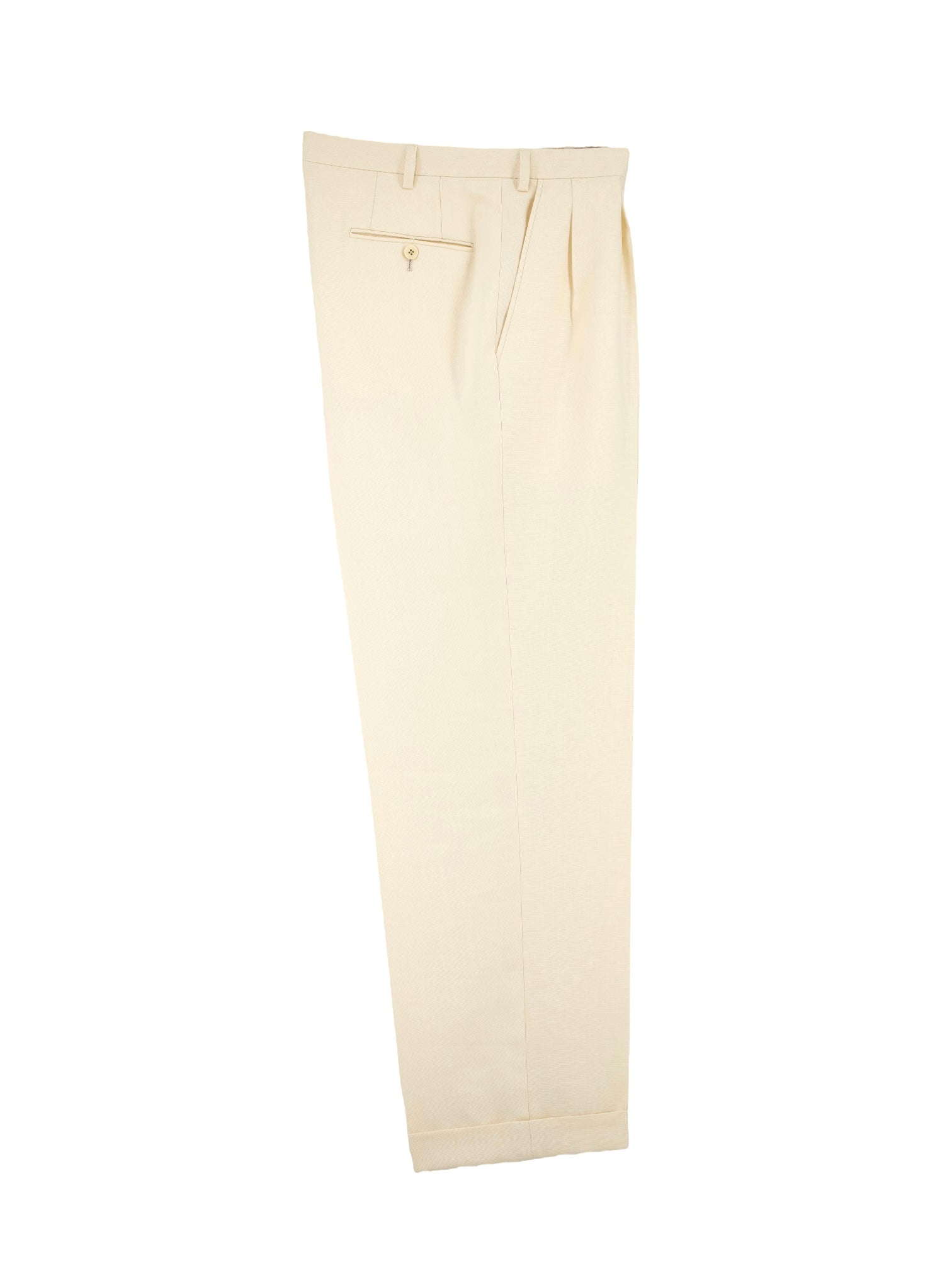

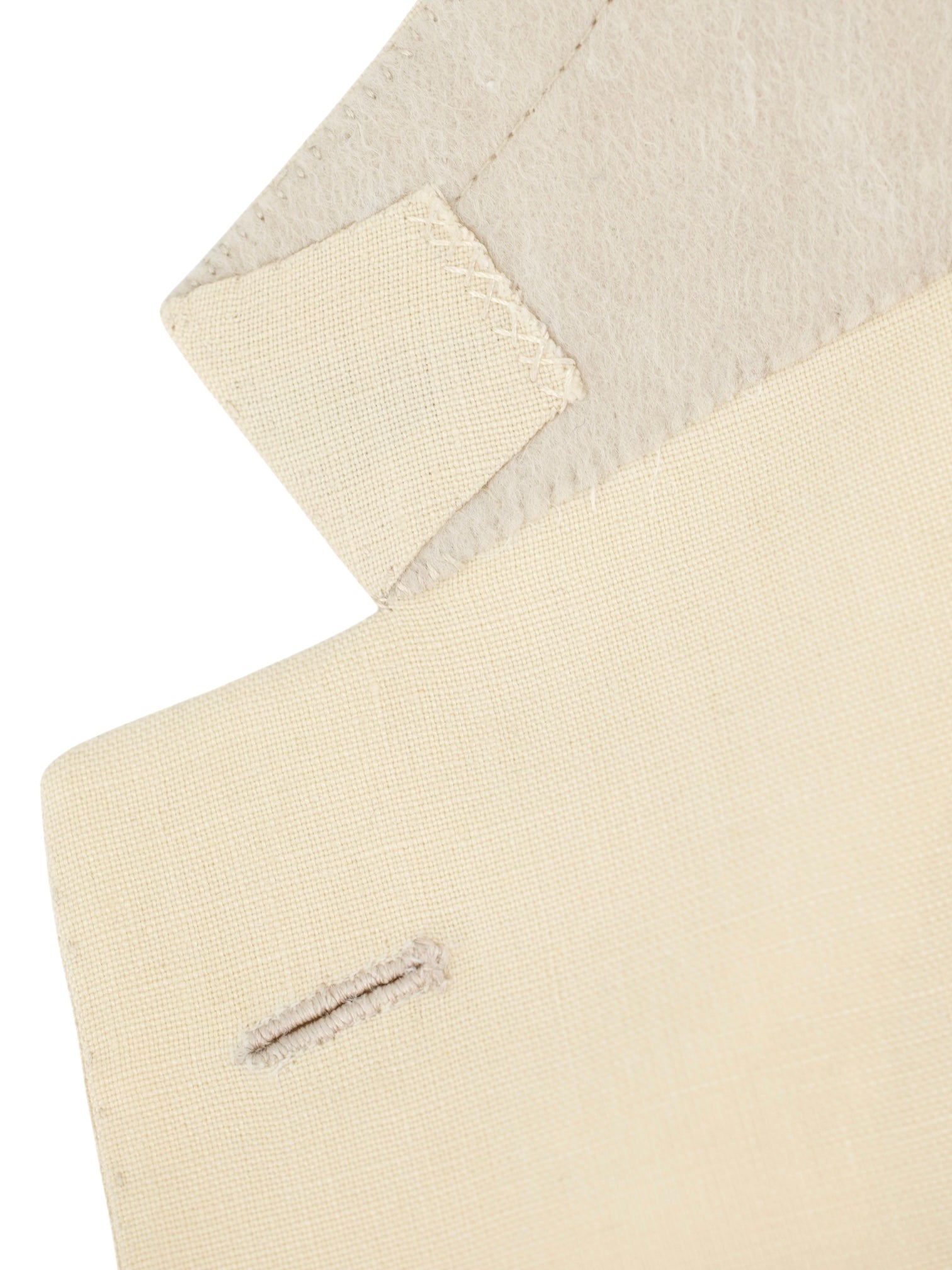
Brioni Ivory Pure Linen Palatino Summer Suit
56 IT / 46 US / Extra Extra Large
Discover the Brioni Ivory Pure Linen Palatino Summer Suit, a statement in Roman nonchalance and cinematic flair. Cut in breezy pure linen, this ivory-hued ensemble is made for sun-drenched days that demand polish without the weight. The jacket features classic notch lapels and a relaxed 2.5-button closure, subtly rolling to mirror the quiet confidence of its wearer. Roman-style shoulders; clean, structured, yet less rigid than their English counterparts—anchor the silhouette with composure. The double-pleated trousers fall in a straight, commanding line, evoking the swagger of mid-century icons and, quite deliberately, the aura of a high-summer mafia movie, where tailoring speaks louder than words.
The "Palatino" fit represents one of Brioni’s more traditional, full-bodied cuts, named after the Palatine Hill in Rome, the cradle of Roman aristocracy. Unlike the brand’s slimmer silhouettes, the Palatino cut champions balance, room, and natural drape, reflecting Brioni’s tailoring philosophy from its golden age. Jackets in this fit feature a generous chest, a soft waist suppression, and broader lapels, offering a quietly assertive presence that resists fleeting trends. The trousers complement with fuller thighs and clean, uninterrupted lines. This fit is often favored by those who seek timeless elegance with Roman gravitas, a silhouette that moves with quiet assurance rather than shouting for attention.
Every element of this suit has passed through Brioni’s storied Roman atelier, where artisans construct each garment through a blend of old-world precision and fluid modernity. From hand-set sleeves to the subtle roll of the lapel, craftsmanship is ever-present but never showy. The linen, sourced from top-grade European mills, is washed and treated for a slightly broken-in hand, allowing it to develop character over time. This is tailoring as legacy; confident, indulgent, and unapologetically cinematic. Discover the elaborated sartorial details below.
Composition: 100% Linen
Color: Ivory
Pattern: Uni
See how we measure our sartorial items
Discover the customization possibilities by visiting our tailor alteration guide
Gratis verzending voor bestellingen boven de 200€ in Nederland, 500€ in de EU en 1000€ buiten de EU.
Verzendkosten voor bestellingen onder de minimumprijs zijn afhankelijk van je land.
General Note: While we inspect each item to ensure its quality, please note that minor imperfections may be present due to the preloved nature of the garments. We strive to represent every item accurately, but subtle signs of wear may sometimes go unnoticed. We appreciate your understanding and commitment to sustainable luxury.
Opties kiezen









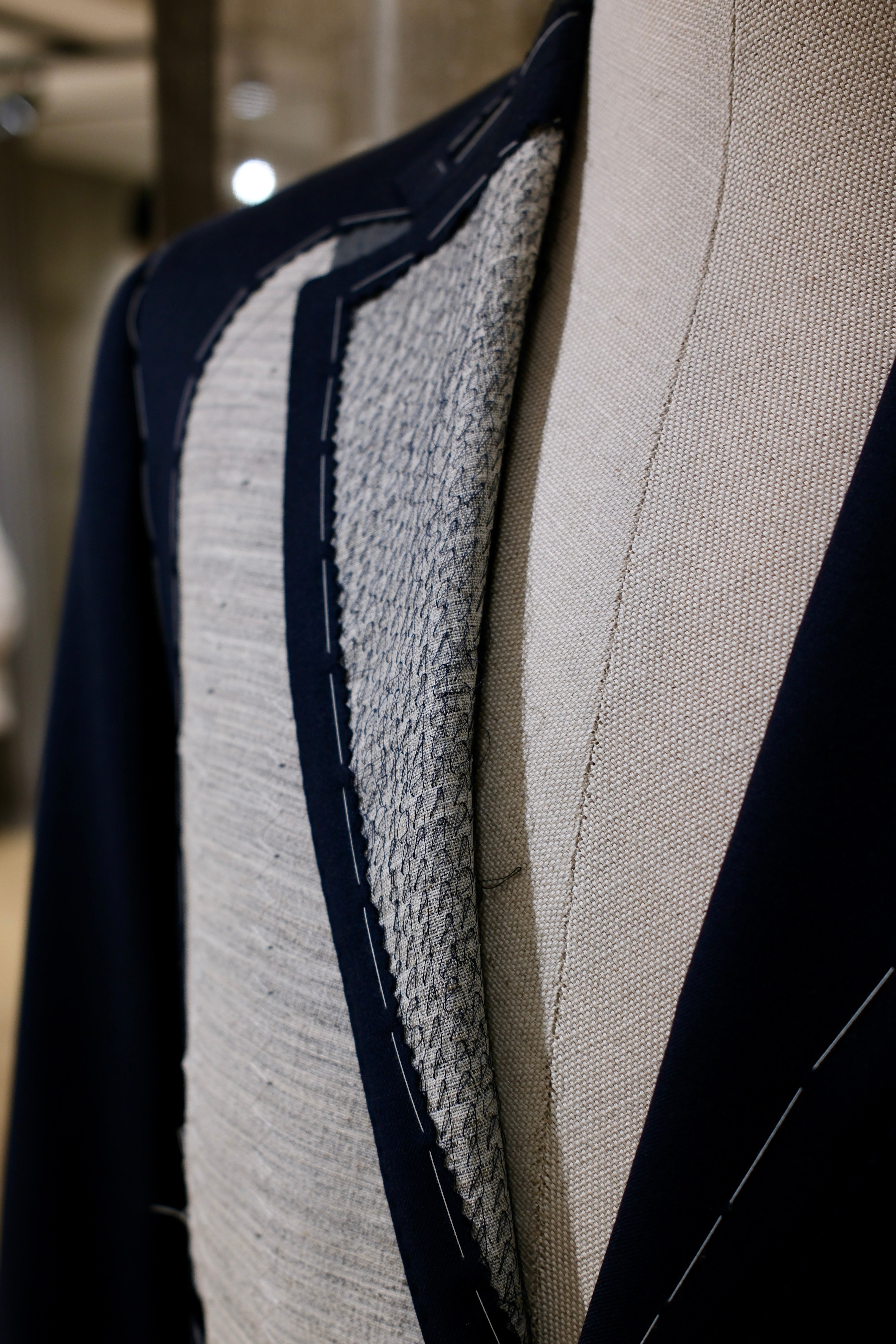
Ontdek de
Sartoriale Details

Full Canvas Constructie
Een sartoriale jas - of mantel - heeft een tussenvoering nodig die helpt om de vorm te geven en het te modelleren. Canvas geeft het item een op maat gemaakte en ambachtelijke uitstraling. Kortom, het brengt leven in het kledingstuk. Technisch gezien is canvas gemaakt van paardhaar, wol, mohair of kamelenhaar. Het kan ook een mix van deze materialen zijn, met variërende dikte en gewicht. De canvas wordt aan de jas gestikt, vaak met de hand, waardoor de canvasstukken 'zweven' tussen de binnen- en buitenstof. Dit geeft de jas extra flexibiliteit. De canvas loopt van de bovenste delen helemaal door tot het einde van de jas. Nadat je je canvasjas een tijd hebt gedragen, zal deze beginnen de vorm van je lichaam aan te nemen en er ongelooflijk natuurlijk uitzien.
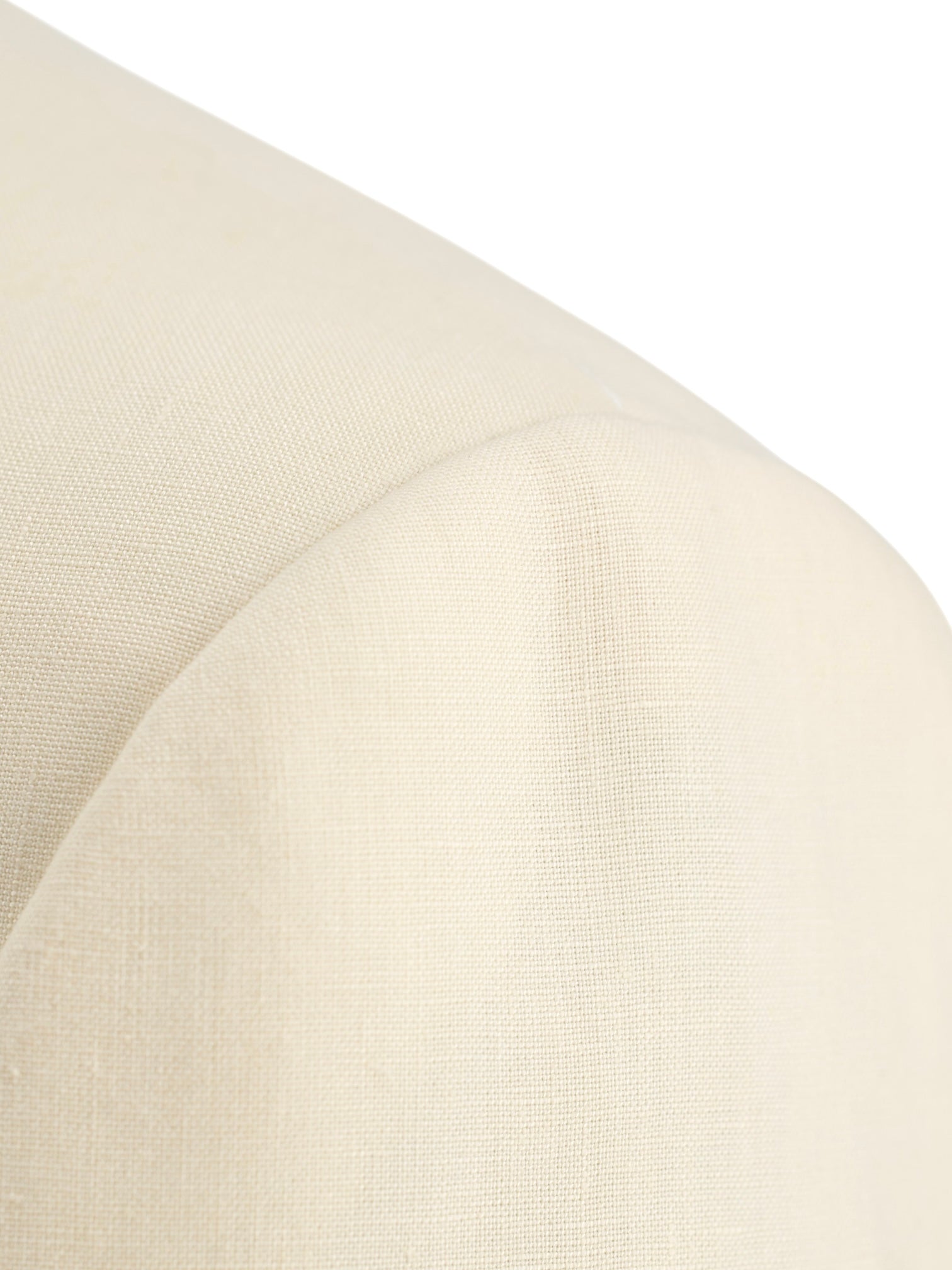
Romeinse Schouder Stijl
Gekenmerkt door een strak, krachtig silhouet, heeft de Romeinse stijl zijn oorsprong in de militaire en paardrijstijl op Savile Row. Terwijl de sterk gestructureerde, militair geïnspireerde pakken met sterke schouders en stijf canvas passend waren voor Engelse edelen, was de ingetogen stijl geen adequate weerspiegeling van de Italiaanse levensstijl. Naarmate het Italiaanse kleermakersvak tot bloei kwam, begonnen echter verschillende stijlen zich te ontwikkelen. In Napels werd de ongestructureerde, grillige Neapolitaanse stijl dominant. In Rome, waar Brioni werd geboren, evolueerde de stijl subtieler. De gestructureerde Britse stijl werd volumineuzer, meer lichaamsbewust en vrij stromend gemaakt zonder te veel van de kenmerkende vorm van Savile Row te verliezen.
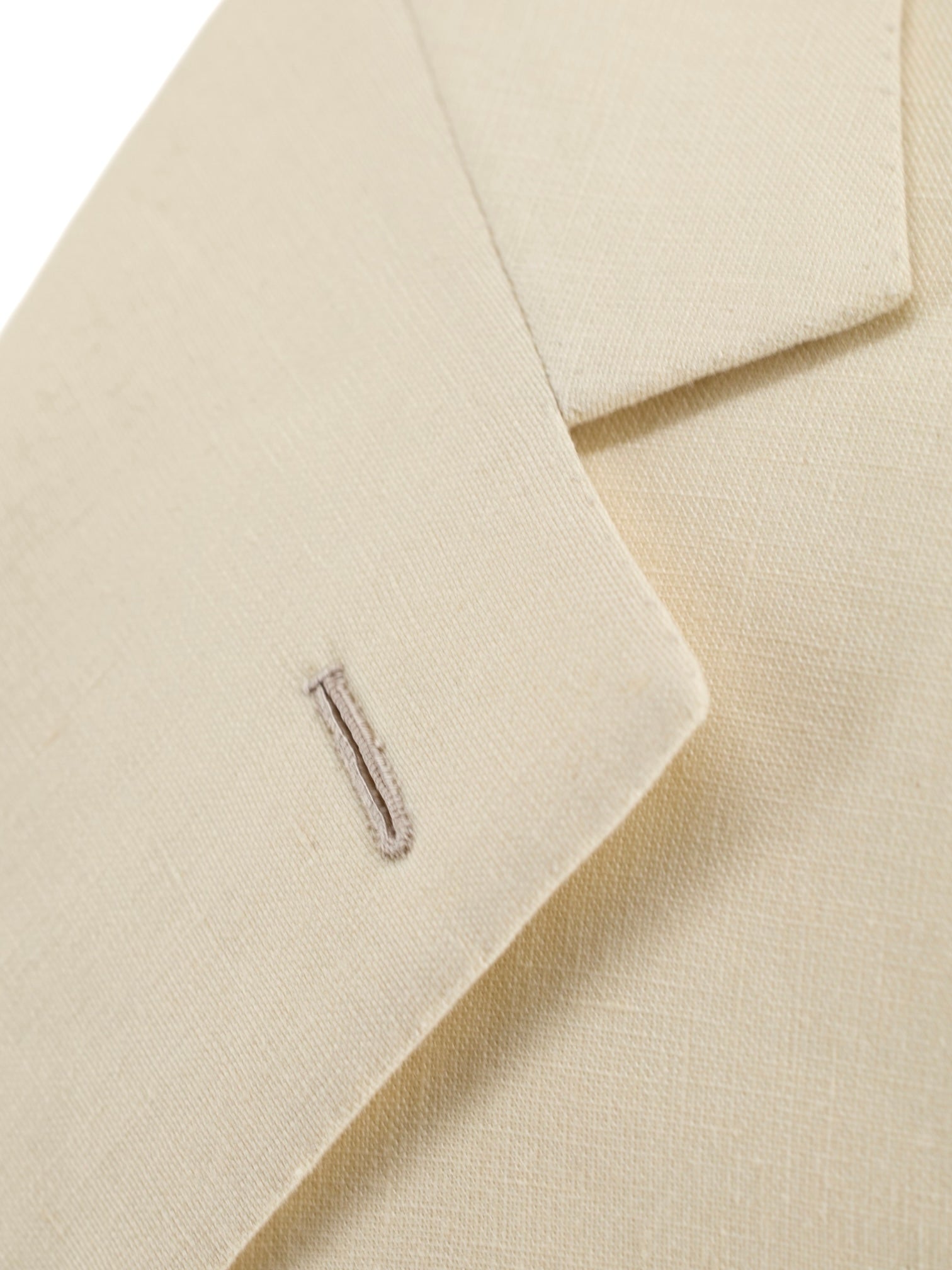
Handgemaakt Knoopsgat
Handgemaakte knoopsgaten worden gemaakt met behulp van een ketting van geknoopte lussen, genaamd festonsteken, die ze sterk en visueel onderscheidend maken. Het duurt ongeveer vijf seconden om met een machine een normaal knoopsgat te naaien - een enkel handgemaakt knoopsgat kost ongeveer 10 minuten om te naaien.
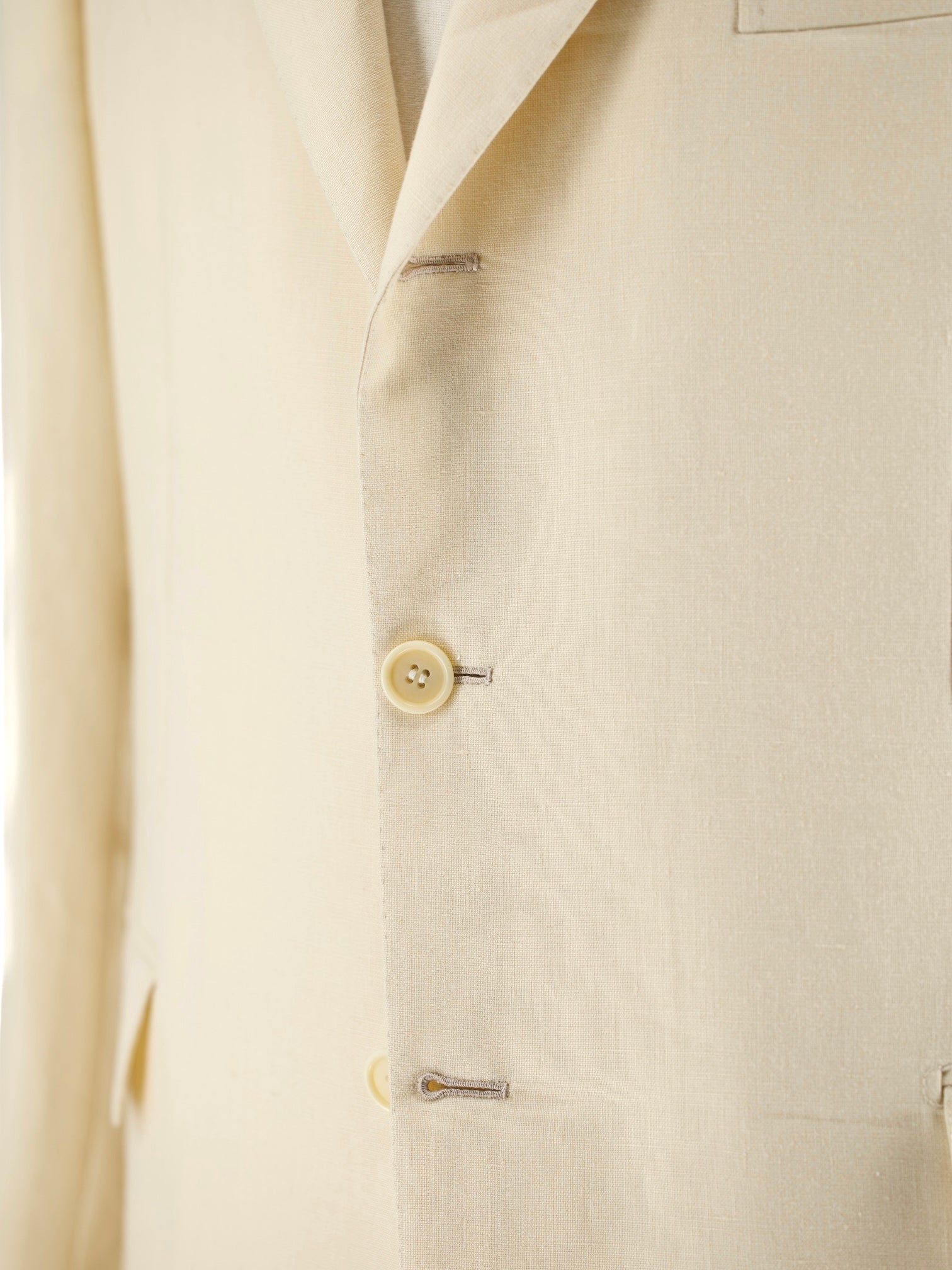
2.5 Knoops Sluiting
De 'tre bottoni stirato a due', ook bekend als de drie rollend op twee reversstijl, is misschien wel het meest beruchte kenmerk van het Neapolitaanse stijl jasje. De bovenste knoop en knoopsgat zijn decoratief, dus blijven ongeknoopt. Terwijl de revers omlaag rolt, vouwt het elegant over de bovenste knoop en stopt net 4 cm boven de tweede knoop, wat de kenmerkende rol van de revers creëert waar de stijl om bekend staat. Omdat het bedoeld is om ongeknoopt te blijven, wordt het bovenste knoopsgat eigenlijk binnenstebuiten gemaakt, zodat de mooie kant nog steeds zichtbaar is.
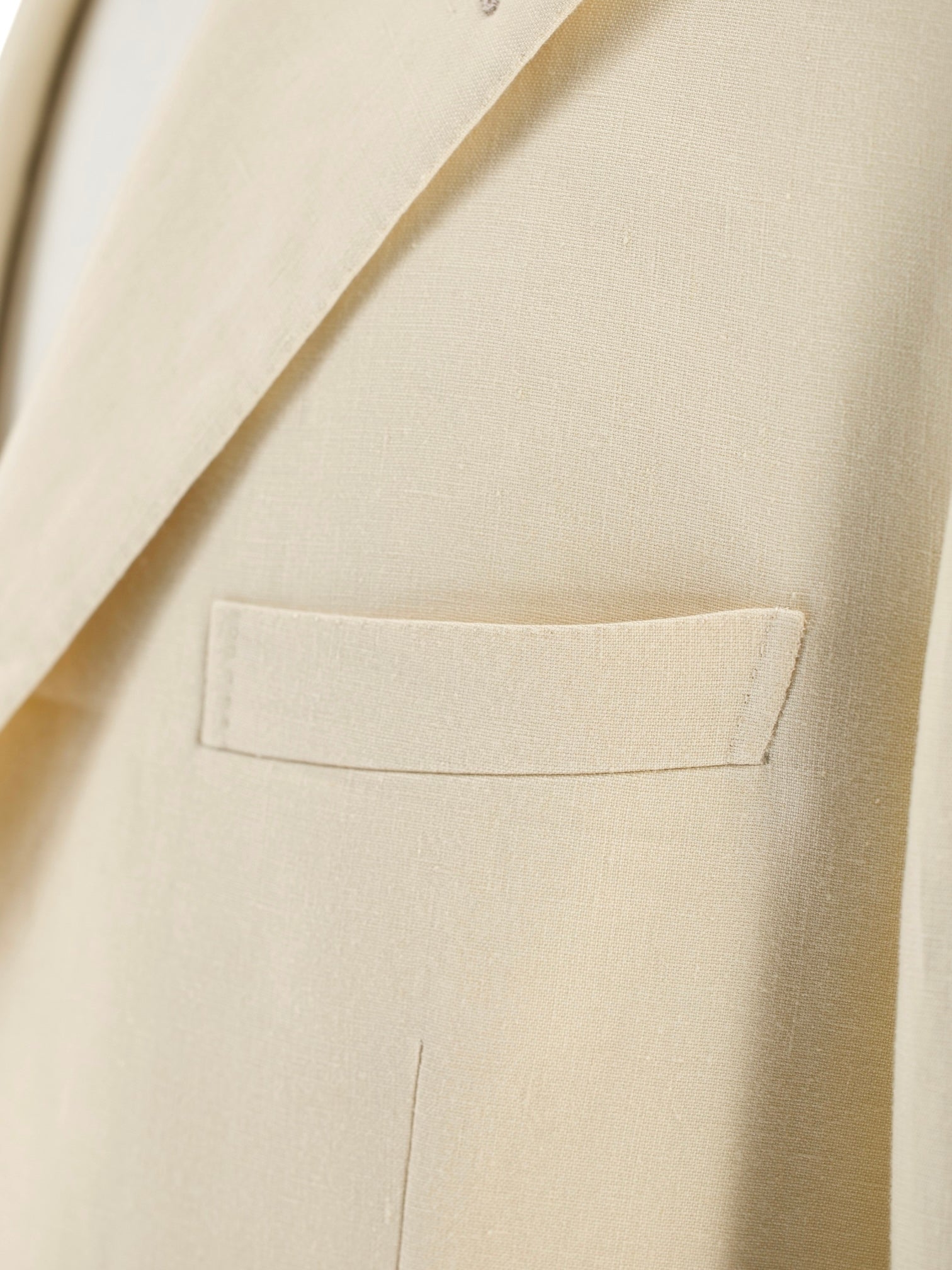
Borstzak - Afgeronde Paspelzak
Ook bekend als 'barchetta', Italiaans voor 'bootje', wordt het zo genoemd omdat deze zak zweeft op de borst, lichtjes schuin omhoog, net als de boeg van een zeilboot. Deze zakken echoën de levendige rol van een revers die de veerkracht van canvas en natuurlijke wol draagt, in tegenstelling tot machinaal gemaakte borstzakken die een meer platte, rechthoekige vorm hebben en minder leven.
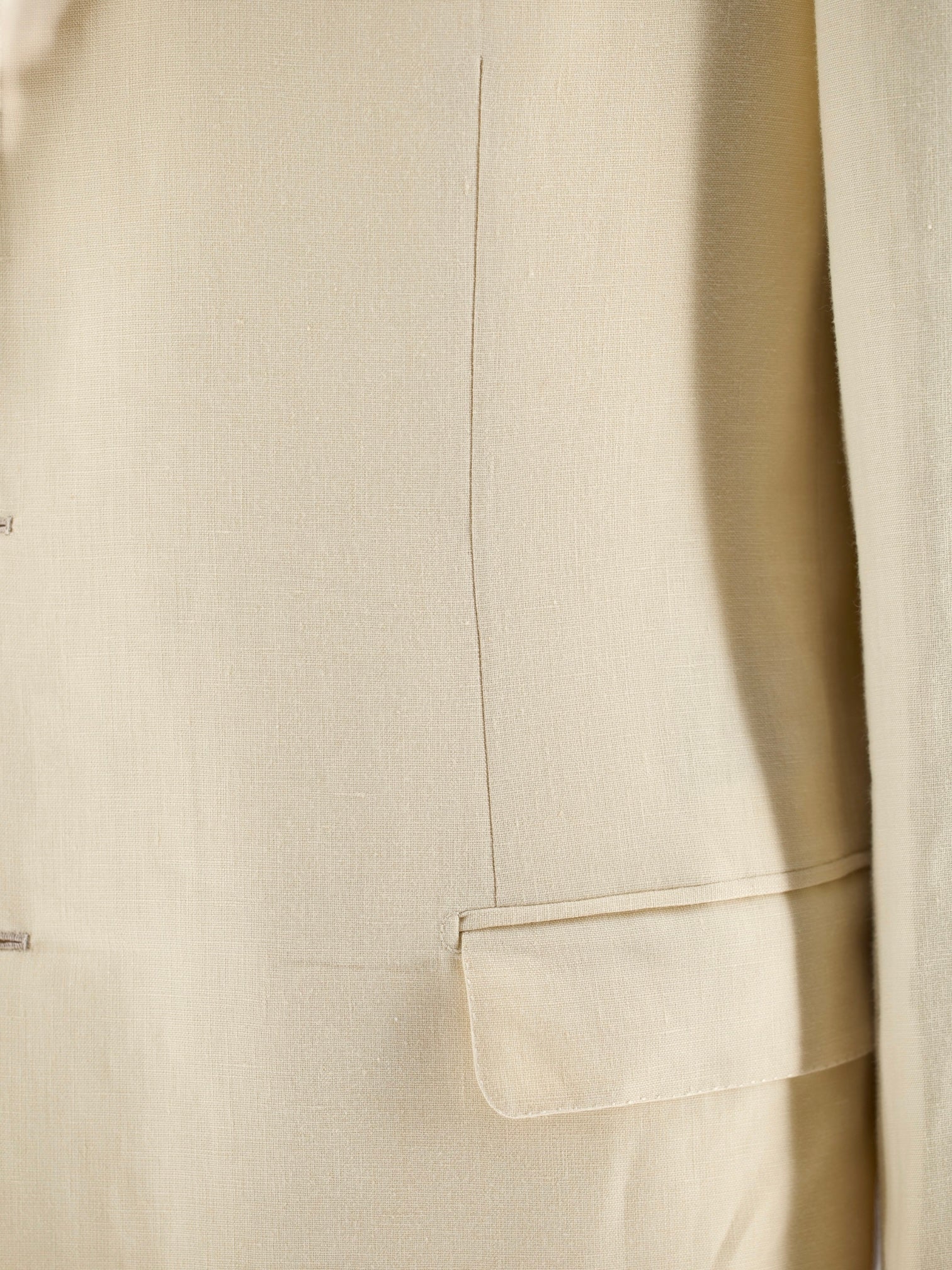
Naden
De kleermaker voegt twee figuurnaden toe - denk aan ze als ingeknepen naden - om ervoor te zorgen dat het lichaam van het jasje een slank silhouet krijgt. Het proces, genaamd "mezzo punto riprese", wordt volledig met de hand uitgevoerd.

Parelmoer Knopen
Parelmoer knopen zijn iriserende knopen gemaakt van de binnenste laag van bepaalde schelpen, met name schelpen van oesters en mosselen die parelmoer bevatten, de minerale substantie die parels vormt. Wat deze knopen zo iconisch maakt, is hun onnavolgbare parelachtige afwerking.
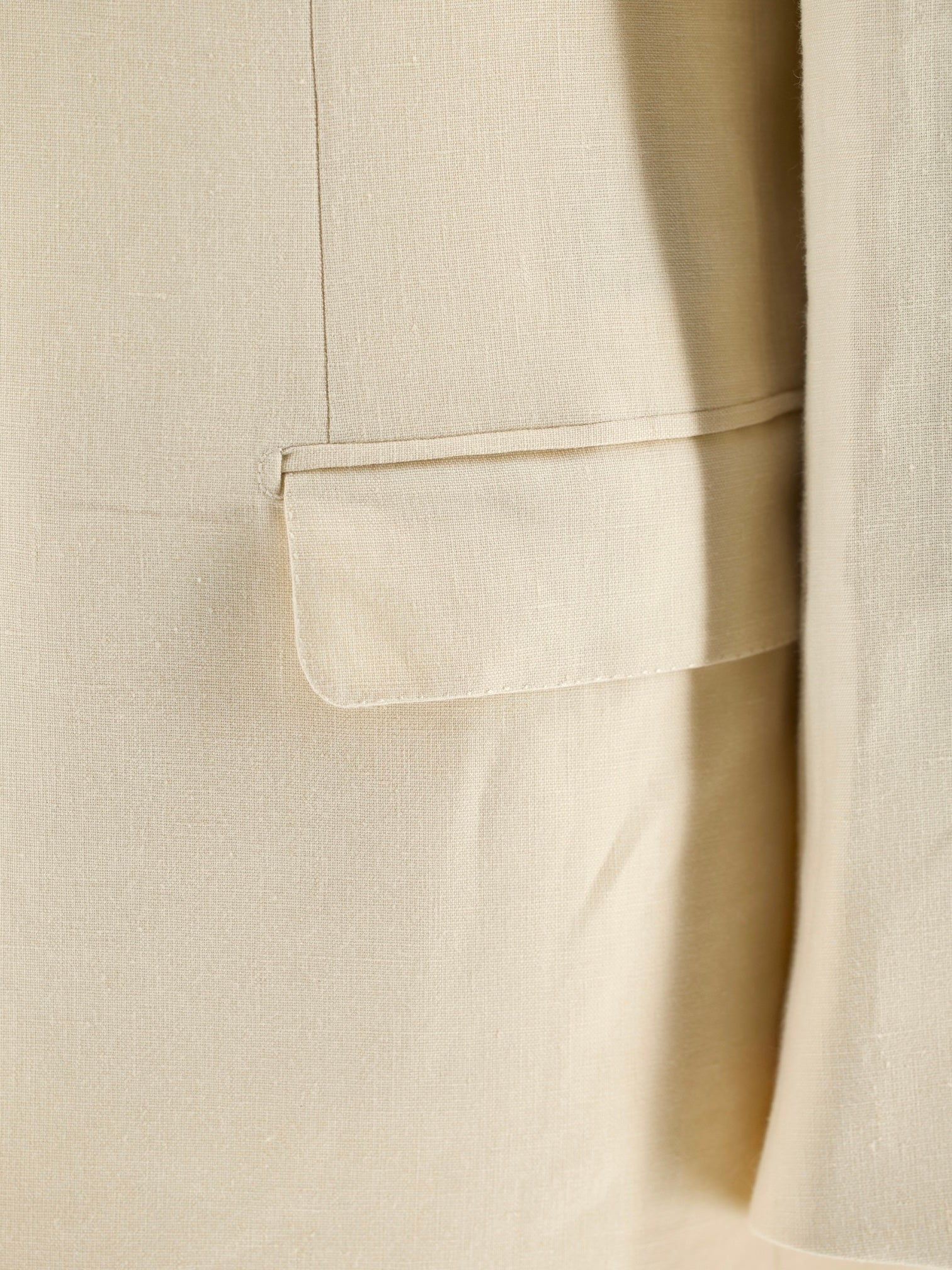
Klepzakken
Dit was oorspronkelijk bedoeld om te voorkomen dat vuil in de jaszakken terechtkomt wanneer deze op het platteland wordt gedragen. Klepzakken bevinden zich min of meer in het midden wat betreft formaliteit: ze zijn een voor de hand liggende keuze voor zakelijke pakken, maar ze kunnen ook voorkomen op blazers als eerbetoon aan hun informele oorsprong.
de details van
de broek

Double Pleated Front
Double-pleat trousers are all about classic elegance. They were a staple in the 1930s and 1940s, an era known for its fuller, more comfortable styles. With two pleats, these pants provide extra room, especially around the hips and thighs, making them great for formal settings. They bring to mind the sophisticated styles of Hollywood icons like Cary Grant, who wore them with effortless charm. Even though slimmer fits have become more popular, double pleats remain appealing for those who appreciate traditional tailoring and timeless style.

Belt Loops
Belt loops are the most common type of waistband found on trousers, providing the option to wear a belt for both style and practicality. Typically spaced evenly around the waistband, belt loops are a versatile feature that can accommodate a wide range of belt styles and sizes. This traditional waistband design is found in everything from casual jeans to formal dress pants, making it a timeless and adaptable option for any wardrobe. Belt loops offer the flexibility to customize your look while ensuring a secure fit.
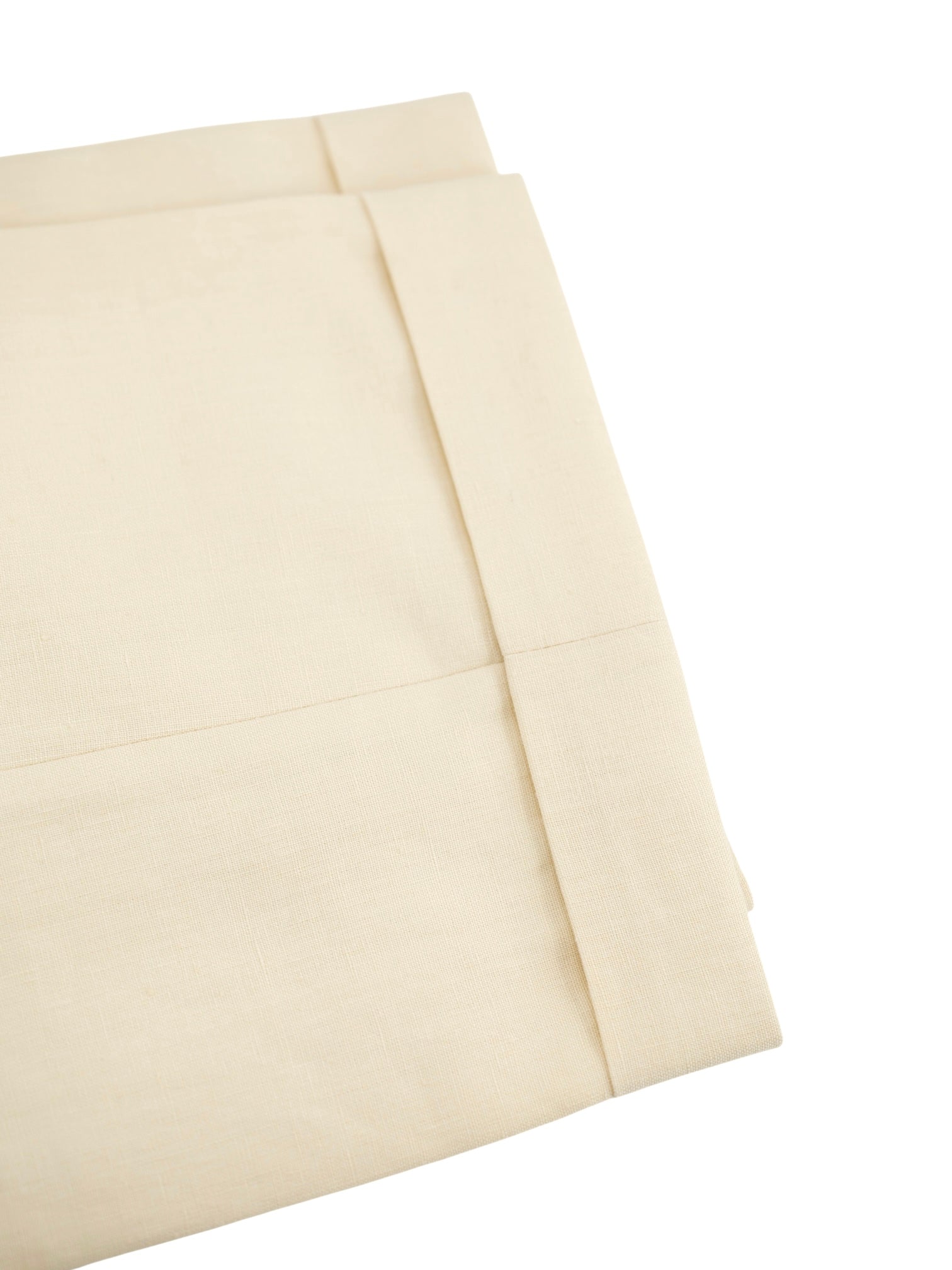
Turn-Up (Cuffed) Hem
The turn-up hem, or cuffed hem, is a classic style where the fabric at the bottom of the trousers is folded outward to create a visible cuff. This style originated with Edward VII in the late 19th century, who had his trousers tailored with cuffs to prevent them from getting muddy, sparking a trend among the fashionable elite. In the 1920s and 1930s, turn-ups became a symbol of wealth and sophistication, as having extra fabric was seen as a luxury. This association continued after World War II when wearing turn-ups subtly indicated affluence in an era of fabric rationing. Today, turn-up hems are a nod to their historical roots, offering a touch of classic elegance and enhancing the overall appearance of formal and tailored trousers.
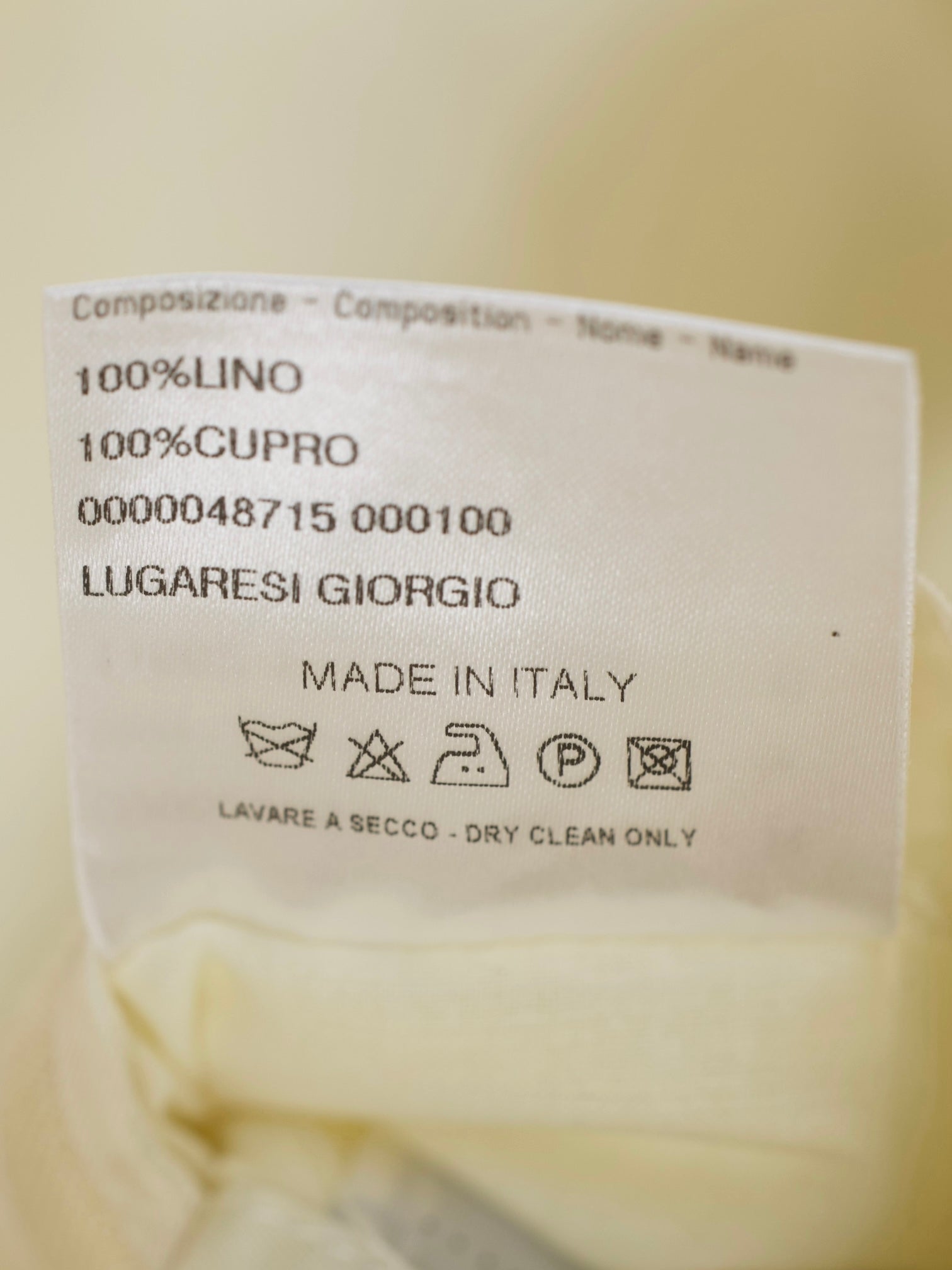
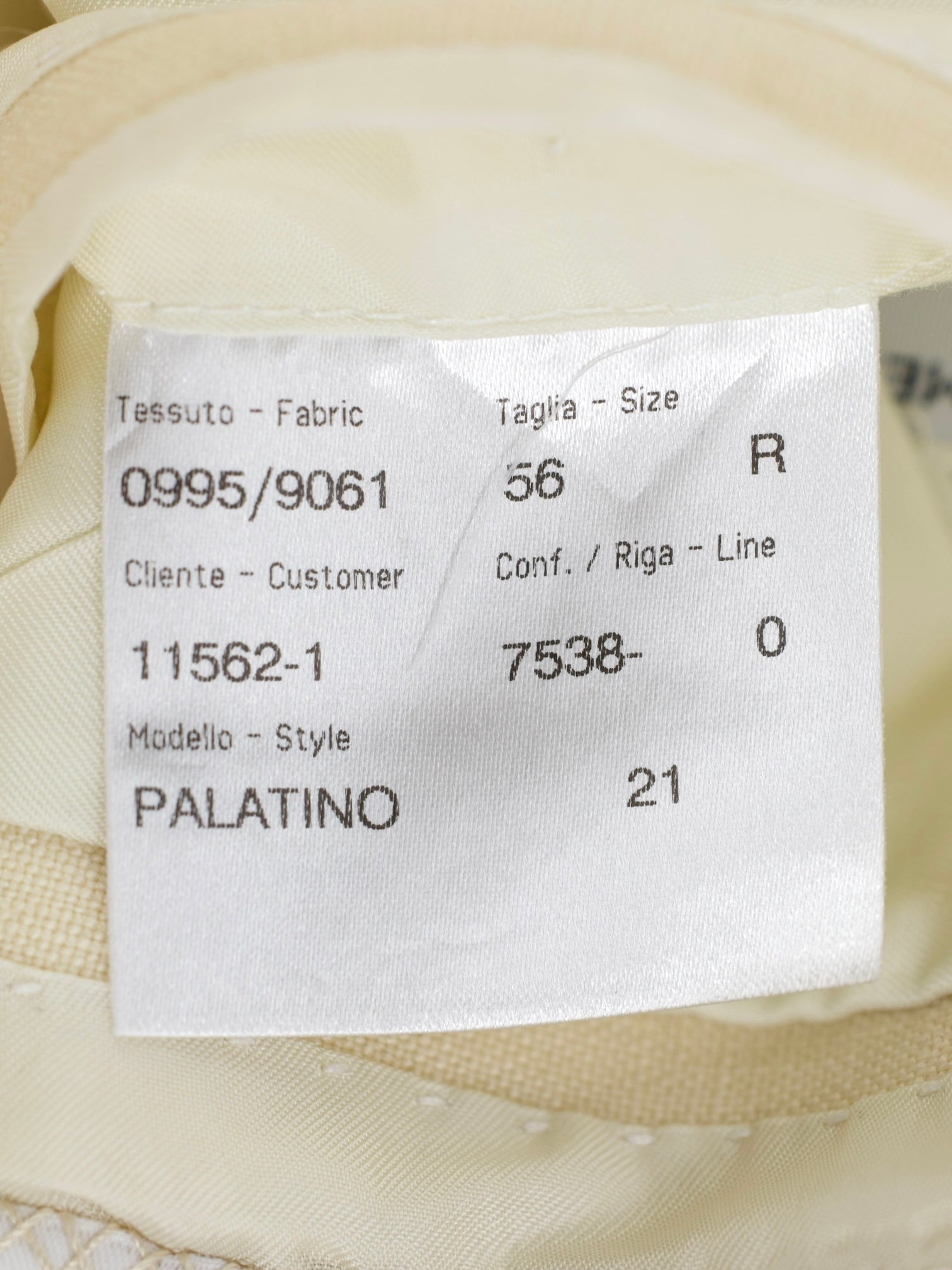
maat
56 IT / 46 US / Extra Extra Large


 Curator's Description
Curator's Description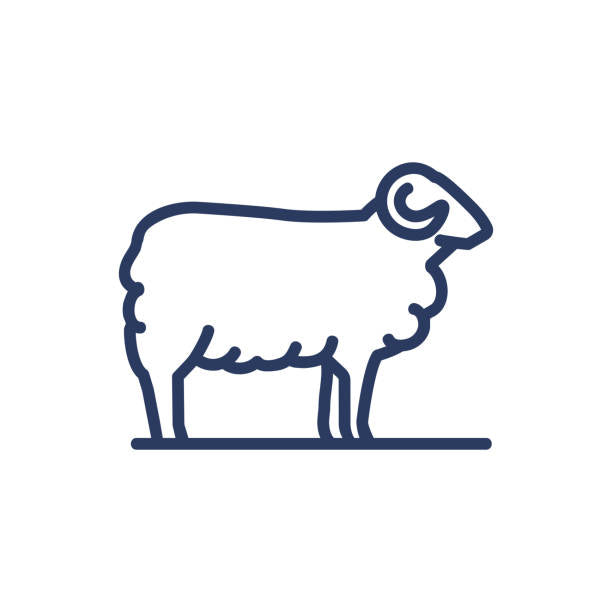 Materialen
Materialen